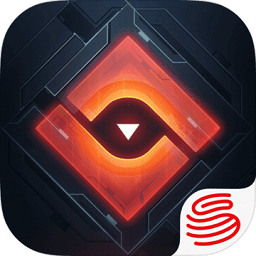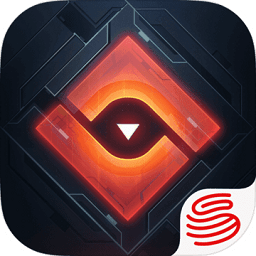biopython Bio.PDB FAQ
时间:2007-03-29 来源:blackjimmy
<meta http-equiv="CONTENT-TYPE" content="text/html; charset=utf-8"><title></title><meta name="GENERATOR" content="OpenOffice.org 2.0 (Linux)"><meta name="CREATED" content="20070329;15215200"><meta name="CHANGED" content="20070329;21131600"> <style> </style>
Biopython Bio.PDB module FAQ
1,Focuses on working with crystal structure biological macromolecules.
2,Well tested. Nearly 5500 structures from PDB—all seemed to be parsed correctly
3,Really fast!
4,Not directly supported for molecular graphics. But there are quite a few python-based solutions. You can use Pymol or BTW.
5,USAGE:
a, importing Bio.PDB :
>>>from Bio.PDB import *
b, input/output
create a structure object from a PDB file:
-
create a PDBParser object:
>>>parser=PDBParser()
-
create a structure object from a PDB file:
>>>structure=parser.get_structure('DOG', '1LKE.pdb')
<here DOG--name for the structure, since i used 'dog' for search>
<1LKE.pdb—the pdb file>
create a structure object from an mmCIF file
-
create an MMCIFParser object:
>>>parser=MMCIFParser()
-
create a structure object from the mmCIF file
>>>structure=parser.get_structure('DOG','1LKE.cif')
some more level access to an mmCIF file
you can create a python dict that maps all mmCIF tags. If there are multiple values, the tag is mapped into a list of values.
>>>mmcif_dict=MMCIF2Dict('1LKE.cif')
eg:get solvent content from an mmCIF file:
>>>sc=mmcif_dict('_exptl_crystal.density_percent_sol']
eg:get the list of the y coordinates of all atoms:
>>>y_list=mmcif_dict['_atom_site.Cartn_y']
Return to parsing the PDB header
>>>resolution=structure.header['resolution']
>>>keywords=structure.header['keywords']
The available keys : name, head, deposition_date, release_date, structure_method, resolution, structure_reference, journal_reference, author, compound
The dict can also be created without creating a Structure object
>>>file=open(filename, 'r')
>>>header_dict=parse_pdb_header(file)
>>>file.close()
Download structure from the PDB:
>>>pdb1=PDBList()
>>>pdb1.retrieve_pdb_file('1LKE')
< in my computer, it generates a file : '/root/lk/pdb1lke.net' >
The PDBList class can also be used
>>>python PDBList.py 1LKE
you must in that directory, of course!
Try to download the entire PDB if necessary
>>>python PDBList.py all /data/pdb
>>>>>>python PDBList.py all /data/pdb -d
Adding the -d option will store all files in the same directory. It's not a good choice! Otherwise, they are sorted into PDB-style rectories according to their PDB ID's.
Keep a local copy of the PDB up-to-date using PDBList.py object
>>>p1=PDBList(pdb=' /data/pdb')
>>>p1.update_pdb()
Use the PDBIO class for writing PDB files
eg: saving a structure
>>>io=PDBIO()
>>>io.set_structure(s)
>>>io.save('out.pdb')
You can't write mmCIF files
the overall layout of a structure object:
SMCRA(structure/model/chain/residue/atom)
A structure consists of models/ A model consists of chains
A chain consists of residues / A residue consists of atoms
Navigate through a structure object:
>>>p=PDBParser()
>>>structure=p.get_structure('X', 'pdb1fat.ent')
>>>for model in structure:
for chain in model:
for residue in chain:
for atom in residue:
print atom
some other shortcuts:
>>># iterate over all atoms in a structure
>>>for atom in structure.get_atoms():
print atom
>>># iterate over all residues in a model
>>>for residue in model.get_residues():
print residue
structures, models, chains, residues, atoms are called Entities in Biopython.
You can always get a parent Entity from a child Entity, eg:
>>>residue=atom.get_parent()
>>>chain=residue.get_parent()
you can also test whether an Entity has a certain child use has_it method
You can do that a bit more conveniently
>>>atoms=structure.get_atoms()
>>>residue=structure.get_residues()
>>>atoms=chain.get_atoms()
简单的说,它们(结构,模块,链,残基,原子)是一个范围问题。你可以从上级中抽取下级内容。也可以综合下级找上级(父子关系)
>>># get all residues from a structure
>>>res_list=Selection.unfold_entities(structure, 'R')
>>># get all atoms from a chain
>>>atom_list=Selection.unfold_entities(chain, 'A')
A=atom, R=residue, C=chain, M=model, S=structure
也可以跨级操作:
>>>residue_list=Selection.unfold_entities(atom_list, 'R')
>>>chain_list=Selection.unfold_entities(atom_list,'C')
Extract a specific Atom/Residue/Chain/Model from a structure:
just use nest structure as list:
>>>model=structure[0]
>>>chain=model['A']
>>>residue=chain[100]
>>>atom=residue['CA']
>>>atom=structure [0] ['A'] [100] ['CA']
Model id: an integer which denotes the rank of the model in the PDB/mmCIF file.
The model is starts at 0. Crystal structure generally have one model id(0), while NMR files usually have more
Chain id: specified in the file, a single character(typically a letter)
Residue id: complicated, due to the clumsy PDB format. A residue id is a tuple with three elements:
1,the hetero-flag: 'H_' plus the name of the hetero-residue, eg. 'H_GLC', or 'W' in the case of a water molecule.
2, sequence identifier in the chain, eg. 100
3, insertion code: eg. 'A'. The insertion code is sometimes used to preserve a certain desirable residue numbering scheme
hetero-flag and insertion code can be blank:
>>># full id
>>>residue=chain[(' ', 100, ' ')]
>>># shortcut id
>>>residue=chain[100]
atom id: the atom name. Eg: 'CA'
In PDB files, a space can be part of an atom name.
calcium—'CA..' , to distinguish from C alpha atom '.CA.'
Disorder handle
two views: the atom and the residue point of view
disordered atoms and residues are stored in special objects that behave as if there is no disorder










